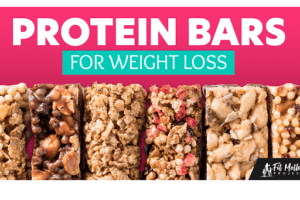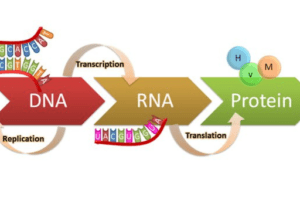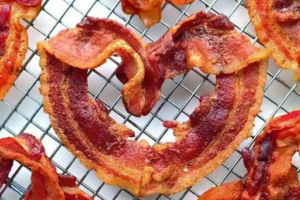Ever had a piece of food stubbornly refuse to leave your mouth after a meal? It’s a frustrating experience, especially when it gets stuck in a hard-to-reach place like a wisdom tooth hole. This common occurrence can be uncomfortable and even lead to complications.

In this article, I’ll explore the reasons why food gets stuck in wisdom teeth holes and offer practical tips on how to remove it safely and effectively. Our goal is to help you maintain good oral health and avoid any unnecessary discomfort.
Saltwater Rinses
- Why it works: Saltwater creates a hypertonic solution, drawing out excess fluid and reducing inflammation. It also helps to clean the area and prevent infection.
- How to do it: Dissolve a teaspoon of salt in a cup of warm water. Swish the solution around your mouth for 30 seconds, focusing on the area around the wisdom tooth hole. Repeat this saltwater rinse several times a day, spitting out the solution each time.
Gentle Brushing
- When to start: Wait until the initial healing period has passed before gently brushing around the wisdom tooth hole.
- How to do it: Use a soft-bristled toothbrush and avoid putting too much pressure on the area. Focus on brushing the teeth and gums surrounding the hole, but be careful not to disturb the blood clot.
Dental Syringe
- How it works: A dental syringe can be used to gently flush out food particles.
- How to use it: Fill the syringe with warm water and gently direct the stream towards the wisdom tooth hole. Be careful not to use too much force, as this could dislodge the blood clot.
Water Flosser
- Benefits: A water flosser can be a helpful tool for removing food particles from hard-to-reach areas.
- How to use it: Set the water flosser to a low setting and gently pulse the water around the wisdom tooth hole. Avoid directing the water directly at the blood clot.
If you experience any severe pain, swelling, or bleeding, it’s important to contact your dentist immediately.
When to Seek Professional Help
While most food particles can be removed at home, there are times when it’s important to seek professional dental care. If you notice any of the following symptoms, it’s time to visit your dentist:

- Severe pain: If you experience intense pain around the wisdom tooth hole, it could be a sign of an underlying issue, such as an infection or dry socket.
- Persistent swelling: Swelling that doesn’t improve over time can be a cause for concern.
- Bleeding: Excessive bleeding from the wisdom tooth socket is not normal and may indicate a problem.
- Fever: A fever is often a sign of infection, which can occur if food particles are trapped in the socket.
If you experience any of these symptoms, don’t hesitate to schedule an appointment with your dentist. They can assess the situation and provide appropriate treatment.
Understanding Wisdom Teeth Holes
Imagine your wisdom tooth socket as a small, deep hole in your jaw. It’s a bit like a tiny cave where food particles can easily get lost. Because the hole is so deep and irregular, it’s hard to reach with a toothbrush or floss.

After your wisdom tooth is removed, a blood clot forms in the socket to help it heal. If this clot gets dislodged, it can leave the hole open and vulnerable to food particles and infection. That’s why it’s so important to keep the area clean and free from debris.
Conclusion
Getting food stuck in wisdom teeth holes can be a frustrating and sometimes painful experience. By understanding the anatomy of the socket and following the tips outlined in this article, you can effectively remove food particles and promote healing.
Remember, maintaining good oral hygiene is essential for preventing complications and ensuring a smooth recovery. If you experience any concerning symptoms, don’t hesitate to consult with your dentist. Your dentist will provide customized care that meets your unique needs.
FAQs About Food Out of Wisdom Teeth Holes
- Is it normal for food to get stuck in wisdom teeth holes?
Yes, it’s quite common for food particles to become lodged in wisdom tooth sockets, especially during the initial healing period. The deep and irregular shape of the socket can make it difficult to clean thoroughly.
- How long does it typically take for wisdom teeth holes to heal?
Healing time for wisdom teeth sockets can vary from a few weeks to several months, depending on individual factors.
- Can I use a toothpick to remove food particles from my wisdom tooth hole?
No, using a toothpick is not recommended as it can dislodge the blood clot and increase the risk of infection.
- What should I do if I experience pain or swelling around my wisdom tooth hole?
If you experience severe pain, swelling, or bleeding, it’s important to contact your dentist immediately. These symptoms could indicate an underlying issue, such as an infection or dry socket.
- Can I use a water flosser to clean my wisdom tooth socket?
Yes, a water flosser can be a helpful tool for removing food particles from hard-to-reach areas. However, it’s important to use it on a low setting to avoid disturbing the blood clot.
- Should I avoid eating certain foods after a wisdom tooth extraction?
It’s generally recommended to avoid hard, crunchy, or sticky foods during the initial healing period to prevent food particles from becoming lodged in the socket.
- Is it necessary to see a dentist after a wisdom tooth extraction?
Yes, follow-up appointments with your dentist are important to monitor the healing process and address any concerns.
- How can I prevent food from getting stuck in my wisdom teeth holes in the future?
Practicing good oral hygiene, such as brushing and flossing regularly, can help prevent food particles from becoming trapped. Additionally, avoiding hard, crunchy, or sticky foods can reduce the risk.






